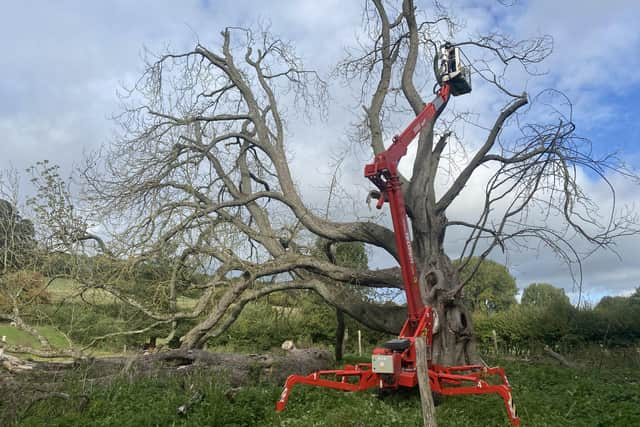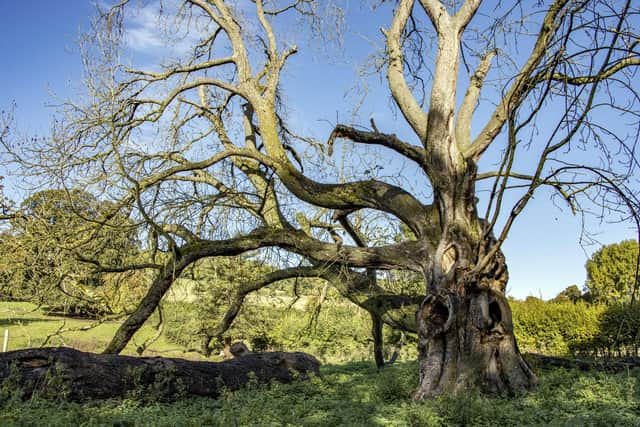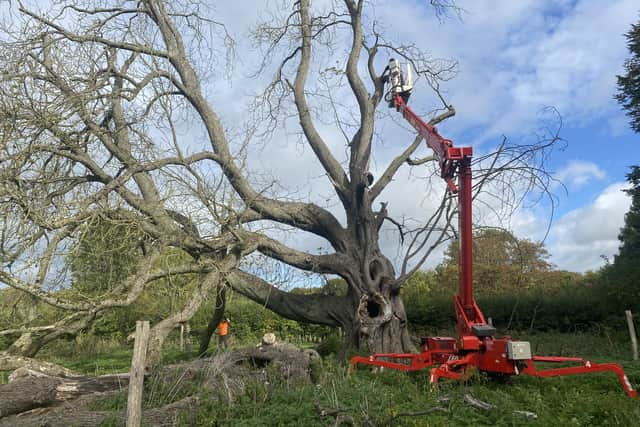Emergency surgery carried out on Europe’s biggest conker tree in Bucks
and live on Freeview channel 276
Europe’s biggest horse chestnut tree underwent emergency tree surgery at its Buckinghamshire home this week after a large crack opened up in its main trunk.
The 300-year-old conker tree at Hughenden, near High Wycombe, which recently featured in the book 50 Great Trees of the National Trust, received Champion status in 2014 after rangers measured its girth.
Advertisement
Hide AdAdvertisement
Hide AdAt 7.33m (just over 24ft) it was officially verified as 13cm larger than its nearest rival in Whitchurch, Hampshire.


“We’re extremely sad to see it declining,” said Nicholas Charon, area ranger for the Central Chilterns.
"It’s grown so well over the years because of its location next to a chalk stream, but it’s now in the final third of its life and we’re doing what we can to extend that.
"It has had everything thrown at it in the last few years, including storms, intense droughts, leaf miner attacks and ganoderma fungus weakening its trunk. Honey fungus, which can often signal the final straw for ailing trees, has also moved in.”
Advertisement
Hide AdAdvertisement
Hide AdBut there is still hope, says trees and woodland adviser Tom Hill. “It’s doing what horse chestnuts of that age and condition do naturally to ensure the next generation," he said.


“The weight of the living parts of the tree are slowly pulling the outer branch tips to the ground, which gives them a good chance of re-rooting to produce offspring, close to the parent tree.
"Our challenge is to help the tree complete this next step in its evolution gradually over the years ahead, and before the original trunk collapses entirely.”
The latest round of works include sensitive crown reductions to take some of the weight from the ends of the branches and propping some branches up with hand-crafted props.
Advertisement
Hide AdAdvertisement
Hide AdThis is to prevent the lower branches tearing and gives the team time to build up the soil beneath the remaining limbs to encourage them to meet the ground and put down new roots.


Tom added: “We’re currently creating a long-term vision and clear framework for protecting our ancient and veteran trees across the National Trust.
"We need extra funding to achieve all the work that is needed, but in the meantime, it’s essential to prevent our really important trees from disappearing.”